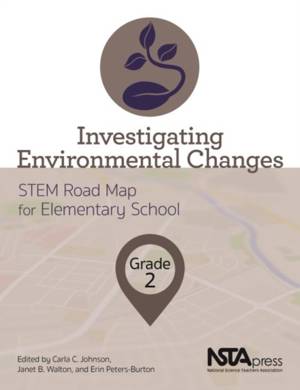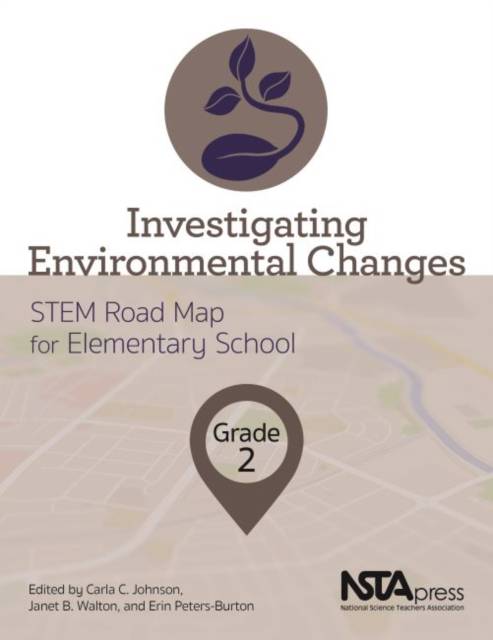
- Retrait gratuit dans votre magasin Club
- 7.000.000 titres dans notre catalogue
- Payer en toute sécurité
- Toujours un magasin près de chez vous
- Retrait gratuit dans votre magasin Club
- 7.000.0000 titres dans notre catalogue
- Payer en toute sécurité
- Toujours un magasin près de chez vous
Investigating Environmental Changes, Grade 2
Stem Road Map for Elementary School
Carla C Johnson, Janet B Walton, Erin Peters-Burton
41,95 €
+ 83 points
Description
What if you could challenge your second graders to design an outdoor STEM classroom with a butterfly garden, birdbath, and sundial? With this volume in the STEM Road Map Curriculum Series, you can!
Investigating Environmental Changes outlines a journey that will steer your students toward authentic problem solving while grounding them in integrated STEM disciplines. As are the other volumes in the series, this book is designed to meet the growing need to infuse real-world learning into K- 12 classrooms.
This interdisciplinary module uses project- and problem-based learning to help young children make discoveries about a range of natural and human-created phenomena. Building the outdoor classroom will help students learn about changes in the natural environment that are associated with the Earth's movement around the Sun, including plant and animal life cycles. They will draw on life, Earth and environmental science, the engineering design process, mathematics, and English language arts to do the following:
- Develop a proposal for their outdoor classroom using persuasive language.
- Devise a data collection plan to analyze environmental changes over time.
- Explore local weather patterns and make connections among the patterns, seasons, and plant life cycles.
- Learn about recycling, including sorting and tracking recycled materials.
- Create works of fiction incorporating their outdoor STEM classroom.
The STEM Road Map Curriculum Series is anchored in the Next Generation Science Standards, the Common Core State Standards, and the Framework for 21st Century Learning. In-depth and flexible, Investigating Environmental Changes can be used as a whole unit or in part to meet the needs of districts, schools, and teachers who are charting a course toward an integrated STEM approach.
Investigating Environmental Changes outlines a journey that will steer your students toward authentic problem solving while grounding them in integrated STEM disciplines. As are the other volumes in the series, this book is designed to meet the growing need to infuse real-world learning into K- 12 classrooms.
This interdisciplinary module uses project- and problem-based learning to help young children make discoveries about a range of natural and human-created phenomena. Building the outdoor classroom will help students learn about changes in the natural environment that are associated with the Earth's movement around the Sun, including plant and animal life cycles. They will draw on life, Earth and environmental science, the engineering design process, mathematics, and English language arts to do the following:
- Develop a proposal for their outdoor classroom using persuasive language.
- Devise a data collection plan to analyze environmental changes over time.
- Explore local weather patterns and make connections among the patterns, seasons, and plant life cycles.
- Learn about recycling, including sorting and tracking recycled materials.
- Create works of fiction incorporating their outdoor STEM classroom.
The STEM Road Map Curriculum Series is anchored in the Next Generation Science Standards, the Common Core State Standards, and the Framework for 21st Century Learning. In-depth and flexible, Investigating Environmental Changes can be used as a whole unit or in part to meet the needs of districts, schools, and teachers who are charting a course toward an integrated STEM approach.
Spécifications
Parties prenantes
- Auteur(s) :
- Editeur:
Contenu
- Nombre de pages :
- 166
- Langue:
- Anglais
- Collection :
Caractéristiques
- EAN:
- 9781681405346
- Date de parution :
- 01-02-19
- Format:
- Livre broché
- Format numérique:
- Trade paperback (VS)
- Dimensions :
- 211 mm x 272 mm
- Poids :
- 480 g

Les avis
Nous publions uniquement les avis qui respectent les conditions requises. Consultez nos conditions pour les avis.






